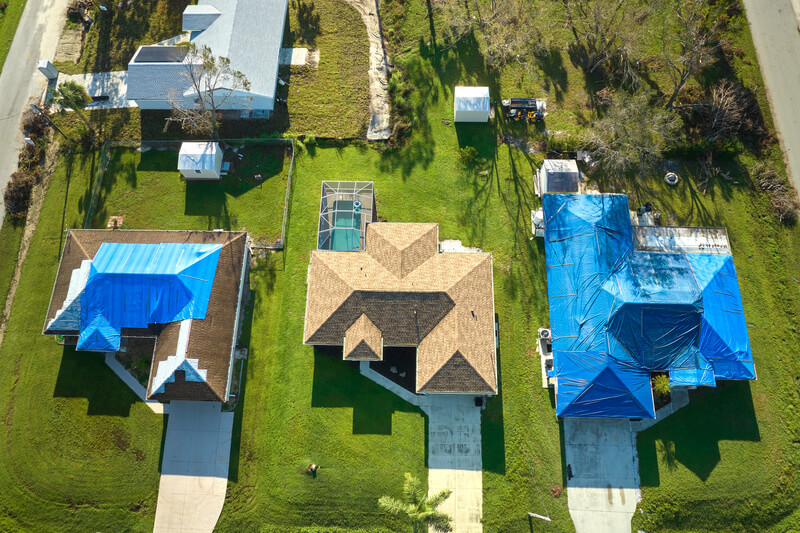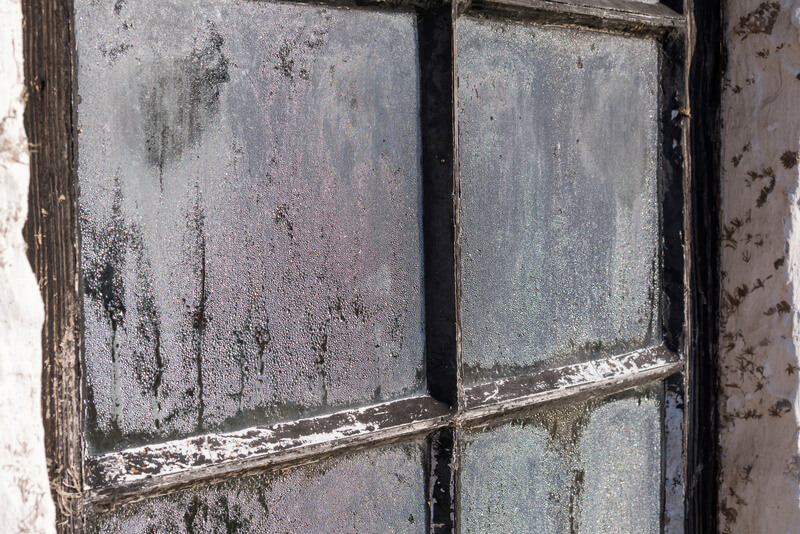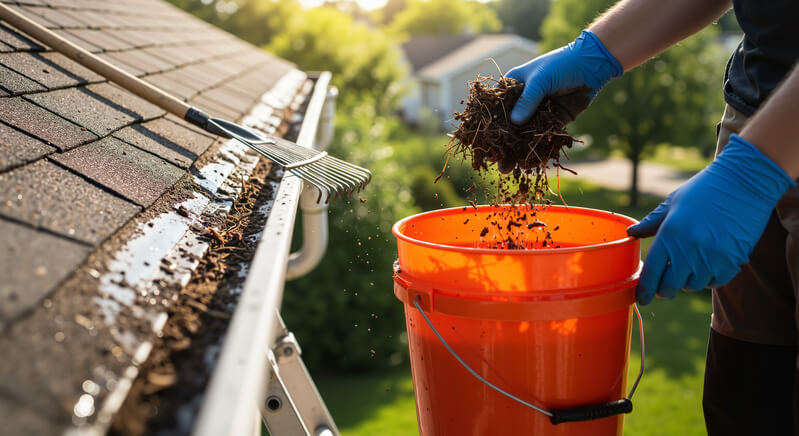Understanding how to tarp a roof in Chicago is a must-have in a city known as the Windy City for a reason. From spring rains to sudden cold snaps in February, the local weather can cause roof damage that needs a quick, reliable, and temporary fix.
The goal: protect your house before further damage occurs and give yourself time to bring in professional help. So whether you’re in a South Side bungalow, a historic home in Hyde Park, or a flat-roofed building near downtown Chicago, the clock starts ticking the moment a storm hits.
Here’s how to tarp your roof safely and effectively in four hours or less—no matter your location across this diverse and dynamic city.
Key Takeaways
- A roof should be inspected from the ground using a phone to check for damage before doing anything else.
- The best tarp is heavy-duty, fits your home’s layout, and can handle lakefront winds or freezing temperatures.
- A tarp must be secured with sandbags or boards and angled to keep water flowing away from the house.
- For lasting protection, rely on certified roofing experts like M&M Home Remodeling Services.
Start With a Safe Roof Assessment
First, assess the weather damage from the ground or a nearby window. Don’t risk injury by climbing up, especially during the winter months or after heavy rain.
If you’re on the West Side, near the Chicago River, or in areas with older buildings like Logan Square, it’s common for tree limbs or snow accumulation to cause punctures or shingle loss. Document what you can using your phone’s camera.
Whether you’re near the arts districts in South Chicago or the upscale shopping and hotel-lined corridors of the Magnificent Mile, the first priority is safety.
Choose the Right Tarp for Local Conditions
Select a heavy-duty, reinforced polyethylene tarp large enough to cover the damaged section and extend several feet beyond. Tarps like these can handle spring gusts from Lake Michigan or fall winds swirling through neighborhoods like Lincoln Park or Grant Park.
Avoid lightweight tarps from your last summer bike ride or camping trip—those simply won’t hold up to a February freeze or July thunderstorm.
For historic districts near museums and parks, like Lincoln Park Zoo or Millennium Park, be mindful of your home’s unique architecture. A custom-fit tarp might be necessary to prevent runoff from damaging detailed soffits or ornate facades.
Secure the Tarp Without Creating New Problems
Use 2×4 wood planks or sandbags to weigh down the tarp—especially effective on flat roofs in areas like downtown or the South Loop. On sloped roofs near Logan Square or Hyde Park, avoid using screws or nails that could worsen existing holes.
Instead, use boards tied off securely. Keep in mind that certain public settings near State Street or O’Hare Airport may require professional-grade solutions due to visibility, accessibility, or safety codes.
Ensure Proper Drainage and Redirect Water Flow
Water that pools can seep through the roof decking, causing rot and mold. In Chicagoland’s historic neighborhoods, from Hyde Park to the West Side, correct drainage is essential.
Angle the tarp to allow water to run off safely into your existing gutter system—especially important if you’re near attractions like the Chicago Cultural Center or high-traffic walkways around Navy Pier.
Improperly placed tarps can result in damage not just to your home but to nearby buildings and sidewalks—a real issue in dense city areas.
Understand Regional Roofing Access Issues
Roof access challenges vary dramatically depending on where you live.
In a low-rise house near South Shore, getting up there may be as simple as using a ladder. But in areas like the Chicago Loop or near upscale hotels along the Magnificent Mile, multi-story buildings may require professional equipment.
Limited street space, transportation options, and foot traffic—especially during high-tourist months like September—can further complicate DIY efforts.
If your land location presents access limitations or complex architecture, it’s best to work with professionals trained for Chicago’s diverse building types.
Protect Your Home With Timely Professional Assistance
Tarping a roof is not a one-person job. Whether you’re doing it near West Loop townhomes or in sprawling suburbs like Valparaiso, always have someone help you.
Unassisted tarping during icy or rainy conditions poses a serious risk of injury. If you’re working around high-rise buildings near the Chicago skyline or busy areas like Navy Pier with attractions like the Ferris wheel, pedestrian safety is also a concern.
A poorly secured tarp can fly off in the next gust, especially during spring winds, worsening the issue for both you and your neighbors.
Secure Long-Term Protection With Trusted Roofing Experts
At best, a DIY tarp is a stopgap.
At M&M Home Remodeling Services, we are here to turn that emergency patch into a permanent solution. From new roof installations in the northern suburbs to historic roof repairs near the Chicago Arts District or cultural landmarks, we deliver world-class results backed by our Peace of Mind Proven Process.
We’ve helped thousands of local homeowners safeguard their properties—whether your view is an aerial view of the lakefront, a city street lined with museums, or parks filled with music during summer events.
Need expert help across Illinois, Northwest Indiana, and even into Milwaukee’s suburbs? Call (708) 756-7800 to schedule your expert roof inspection and receive a free estimate.
From Chicago’s historic communities to Chi-Town’s lakefront rooftops and Indiana’s country towns, we’re your trusted roofing partner—backed by 48 years of proven results.
Frequently Asked Questions
What if my roof leaks during an outdoor event in a public setting?
We offer emergency service near public settings, helping secure properties quickly so you can avoid further damage during festivals, parades, or community gatherings across the Second City.
Can I get a roof inspection after an April storm?
Yes, April inspections are available and recommended. Our team often handles spring damage near the Willis Tower and other central locations affected by seasonal weather swings in the city.
Do you serve homes near deep-dish pizza spots or cultural landmarks?
We provide full roofing services near downtown areas known for deep dish pizza, museums, and some of Chicago’s largest collections of historic architecture and public art.
How can I explore roof replacement options after emergency tarping?
You can explore long-term roofing solutions with our experts. We guide you through materials, financing, and warranties, whether you’re near Logan Square or planning a history walk downtown.





